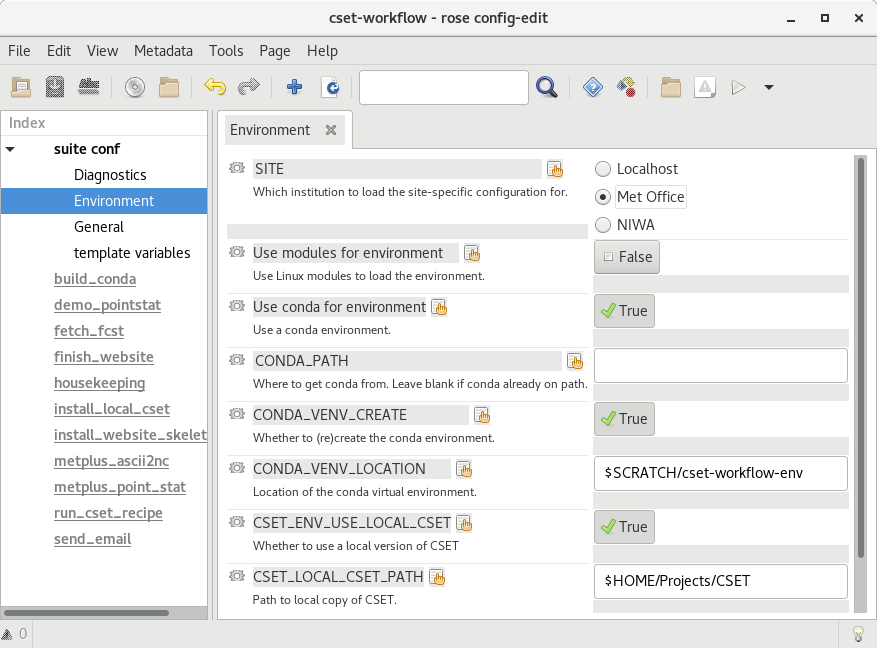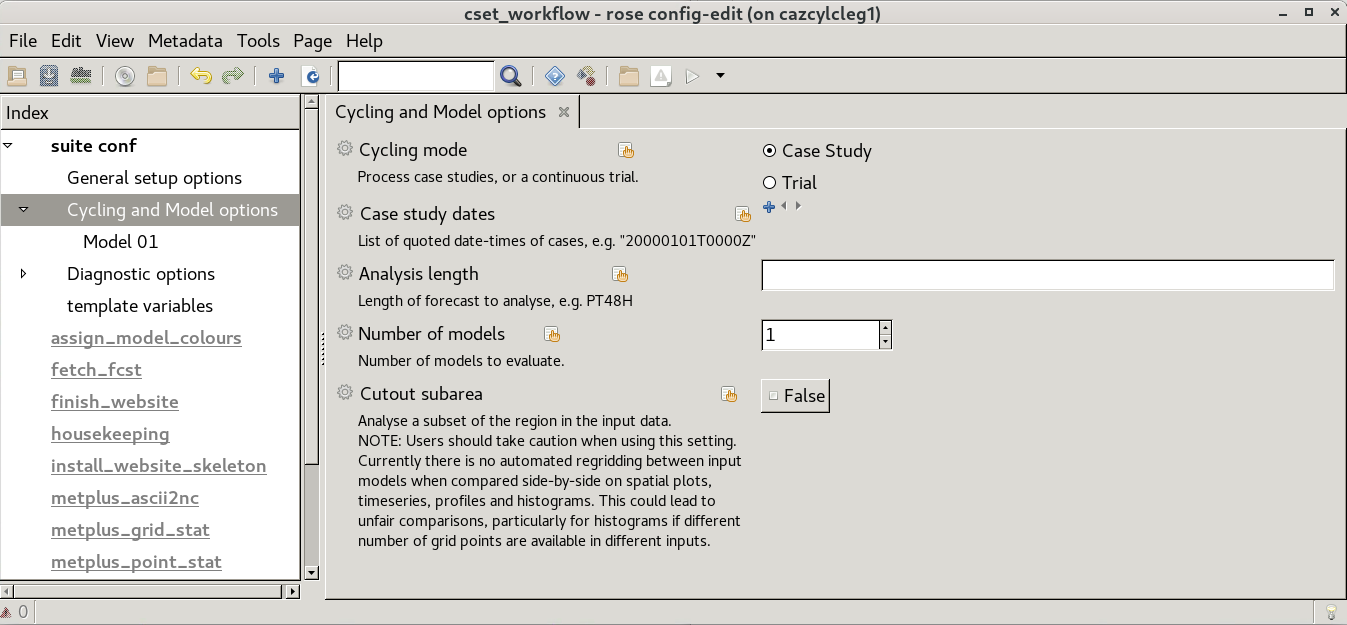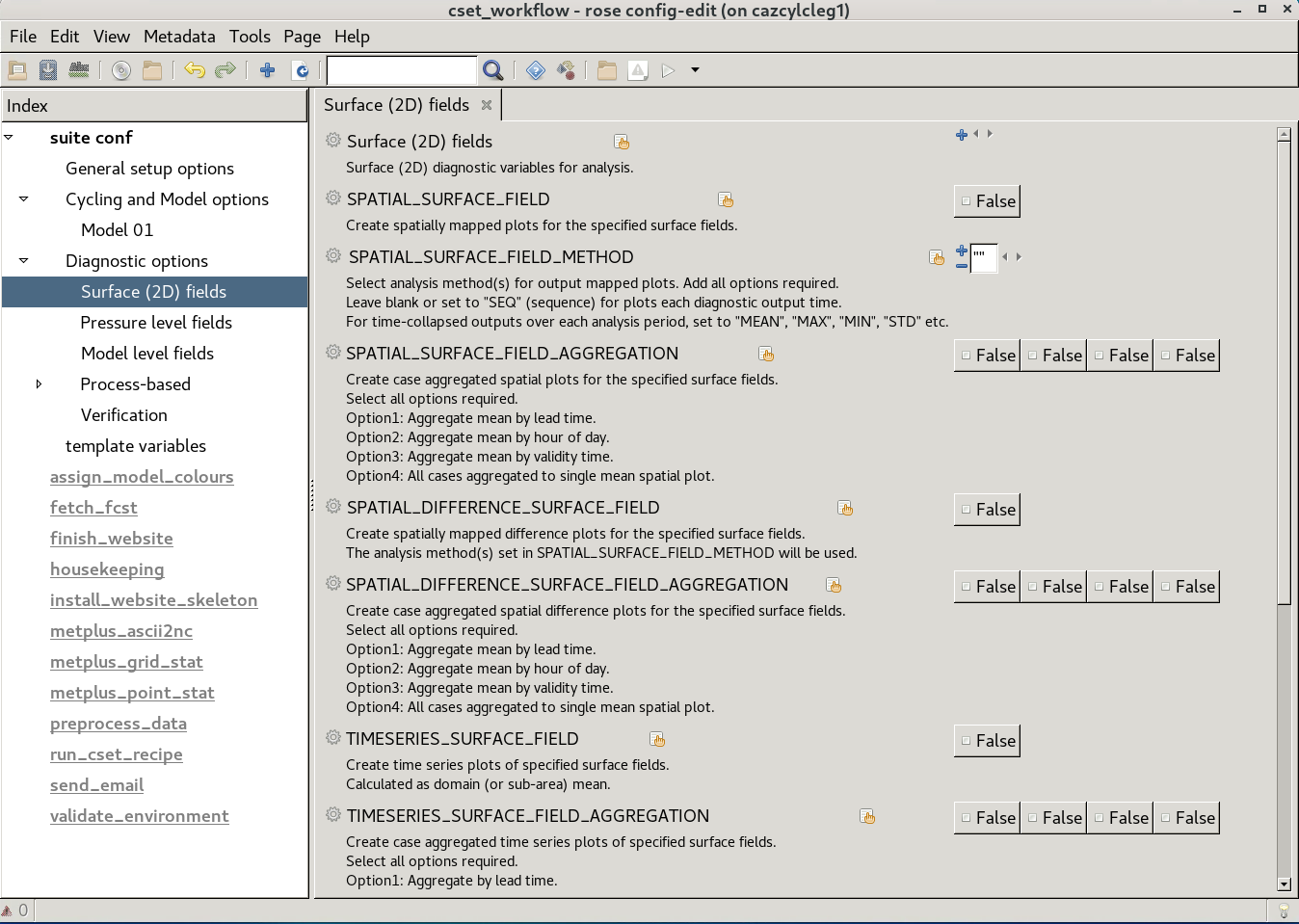Configure the workflow¶
Before running the CSET workflow, the workflow configuration needs to be edited to add relevant task details.
Start by making a copy of the rose-suite.conf.example file called
rose-suite.conf.
This needs further job-specific changes, which are done using rose edit, a GUI configuration tool. Within rose edit work through each section under the “suite conf” tab in turn and update required config options. Each setting has a description and help text which can be used as a primary source of documentation when updating options.
# Copy the example configuration.
cp rose-suite.conf.example rose-suite.conf
# Edit rose-suite.conf with the rose edit GUI.
rose edit &
General setup options¶
The General setup options section contains settings for controlling how CSET
integrates with your compute environment. This includes setting a Site
profile and activating modules. This section also includes whole-workflow
configuration items including required level of logging and housekeeping,
setting a path to override the default variable colorbar settings and set web
paths for CSET outputs.

Cycling and Model options¶
The Cycling and Model options section contains settings for the input data.
Here you specify the Cycling mode for evaluation tasks (over “Case Study”
periods or a “Trial” period of successively running, potentially overlapping,
forecasts), and the number of inputs (typically models) to evaluate.
For each model up to the number required, a model-specific tab is available in which to set a model name and paths to model data.

Diagnostic options¶
The Diagnostic options section contains settings for enabling the various
diagnostics included with CSET. Panels are provided to
control options for standard plots as required of Surface (2D) fields,
Pressure level fields and Model level fields. Sections include editable
items to list requested diagnostic variables and processing methods. Options are
provided to enable or disable which plot types are required. Additional options
may also be activated after enabling particular GUI settings.
Additional panels are provided for settings associated with more bespoke
Process-based methods (with a separate panel for each supported method) and
Verification recipes.
Further details are provided in the worked example.

Help text for each variable can be viewed by clicking on the variable’s name.
Once you have finished updating CSET settings you can save the GUI (down arrow symbol) or (File -> Save) and close rose edit.
Experienced CSET users, once familiar with settings, can also choose to update
the rose-suite.conf file using a command-line editor, but for general use
the rose edit GUI is recommended.